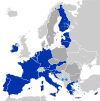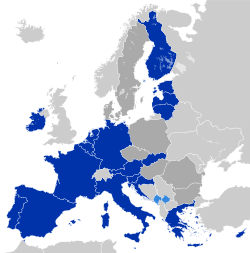Rada pro obecné záležitosti
| Evropská unie |
 Tento článek je o: |
Politika |
|
Rada pro obecné záležitosti (GAC) je konfigurace Rady Evropské unie, která se setkává jednou měsíčně. Setkávají se ministři zahraničí členských států. V závislosti na programu se setkání účastní také ministři zodpovědní za evropské záležitosti.
Byla založena v roce 2009 Lisabonskou smlouvou. „Rada pro obecné záležitosti a vnější vztahy“ se rozdělila na Radu pro zahraniční věci a Radu pro obecné záležitosti. Obecná a zahraniční rada jsou jediné dvě rady uvedené ve smlouvách EU.
Rada pro obecné záležitosti se zabývá záležitostmi, které ovlivňují více než jednu z politik EU, jako jsou jednání o rozšíření EU, příprava víceletého rozpočtu EU nebo institucionální a administrativní otázky. Koordinuje přípravu na a činnost zasedání Evropské rady. Hraje také roli při koordinaci práce v různých oblastech politiky prováděnými Radou v jiných konfiguracích a zpracovává veškeré dokumenty, které jí svěří Evropská rada.
Složení
Konfigurace
| Konfigurace | Oblast | Členové | Předseda Rady | Současný úřadující předseda |
|---|---|---|---|---|
| GAC |
| ministři evropských záležitostí | Odpovědný ministr předsedajícího členského státu | José Manuel Albares (ES) |
| GAC (Soudržnost) | ministři soudržnosti |
Odkazy
Reference
V tomto článku byl použit překlad textu z článku General Affairs Council na anglické Wikipedii.
Externí odkazy
 Obrázky, zvuky či videa k tématu Rada pro obecné záležitosti na Wikimedia Commons
Obrázky, zvuky či videa k tématu Rada pro obecné záležitosti na Wikimedia Commons
- O Radě pro obecné záležitosti
- Tiskové zprávy Rady pro obecné záležitosti
- The General Affairs Council: The Key to Political Influence of Rotating Presidencies od Piotra Macieje Kaczyńského a Andrewa Byrna (anglicky)
Média použitá na této stránce
Eurozone
The twelve golden European Union stars.
Autor: JLogan, Licence: CC BY-SA 3.0
Chart of the results of the 2009 European election by the groups in Parliament, intended to replace Image:Composition of the European Parliament.svg.
- In order to allow the chart to be used on all wikis, the chart has no annotations in English.
- The colours follow the convention established on English Wikipedia and are coloured to the following schema:
- For details on English Wikipedia conventions and the groups, see en:Political groups of the European Parliament.
Autor: aJAX, Licence: CC BY-SA 4.0
The legislative triangle of the European Union
Autor: JLogan, Licence: CC BY-SA 3.0
Chart of the results of each European election by their group in Parliament, intended to replace Image:Ep1979-2004.png.
- In order to allow the chart to be used on all wikis, the chart has no annotations in English.
- The chart has no exact percentages on it because exact percentages vary dependent on which source you're looking at: the problems inherent in assembling results from multiple member states, who supply results in different languages at different dates, using different methods, means that even reliable sources differ slightly when compared to each other. To get around this problem, the percentages depicted are based on the agreed average on English Wikipedia.
- The colours follow the convention established on English Wikipedia and are coloured to the following schema:
- For details on English Wikipedia conventions and the groups, see en:Political groups of the European Parliament.
Autor: Ssolbergj; description by Martinvl, Licence: CC BY-SA 4.0
Map showing the extent of theSchengen Agreement.










